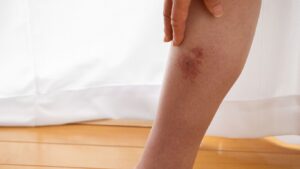Importance of Skin Care in Lymphedema Management
Managing lymphedema effectively requires a comprehensive approach, and skincare is one of the most critical aspects of this management. Individuals with lymphedema often experience swelling in their affected limbs due to a compromised lymphatic system. This condition can lead to various skin changes and increase the risk of infections, making proper skin care essential. Maintaining healthy skin helps lymphedema patients prevent complications and improve their overall quality of life.
Why is Skin Care Important for Individuals with Lymphedema?
How Does Proper Skin Care Affect Lymphedema Treatment?
Proper skin care plays a vital role in the overall treatment of lymphedema. The skin acts as a barrier that protects the underlying tissues and lymphatic system from external threats. When skincare is neglected, it can compromise skin integrity, exacerbating lymphedema symptoms. For instance, skin injuries or breaks can allow bacteria to enter, resulting in skin infections such as cellulitis. These infections not only worsen lymphedema but can also lead to further complications that necessitate more aggressive treatment. Therefore, attention to skin care is fundamental in managing lymphedema, as it helps reduce the risk of infection and maintains the skin’s health.
What Are the Symptoms of Lymphedema Related to Skin Health?
Individuals with lymphedema may experience various skin changes as a direct consequence of the swelling. Symptoms of lymphedema related to skin health often include dryness, redness, and irritation in the affected area. The skin may become tight or feel thickened, and in severe cases, patients might notice skin folds or pitting oedema. These symptoms can make it challenging to keep your skin clean and healthy. Additionally, dry skin can lead to itching, which may result in scratching and potential skin damage. Recognizing these symptoms early allows patients to implement good skin care practices to mitigate further complications.
How Can Good Skin Care Help Reduce the Risk of Infection?
Good skin care is paramount in reducing the risk of infection among lymphedema patients. Keeping the skin clean and moisturized helps maintain the skin barrier, essential for protecting against pathogens. Regular moisturizing with lotion or cream can prevent dry skin, which is prone to cracking and irritation. Furthermore, maintaining clean skin reduces the chances of bacteria entering through tiny breaks. For individuals with lymphedema, the goal is to manage swelling and ensure that the skin remains intact and healthy, thereby helping reduce the risk of infections such as cellulitis.
What Skin Care Tips Should Patients with Lymphedema Follow?
How to Keep Your Skin Clean and Healthy?
Patients with lymphedema should establish a consistent skincare routine to keep their skin clean and healthy. Begin by gently washing the affected area with mild soap and lukewarm water, avoiding hot water that can dry the skin. After washing, it is crucial to dry the skin thoroughly, paying particular attention to folds where moisture can accumulate. Keeping the skin clean is essential, as it helps to prevent irritation and potential infections. Additionally, incorporating a nourishing lotion or cream immediately after drying can lock in moisture and enhance skin hydration, creating a protective barrier against environmental factors.
What Products Should You Use for Skin Care in Lymphedema?
Choosing the proper skin care products is essential for individuals managing lymphedema. Look for hypoallergenic, fragrance-free products designed for sensitive skin to avoid irritation. Creams and lotions containing ingredients like glycerin or shea butter can provide deep hydration and restore the skin barrier. Additionally, insect repellent is advisable when venturing outdoors, as insect bites can lead to skin injuries and infections. Always consult a healthcare provider before introducing new products into your skincare routine to ensure they are safe and compatible with your lymphedema management plan.
How Often Should You Moisturize the Affected Area?
It is recommended that lymphedema patients moisturize the affected area at least twice daily to maintain optimal skin health. Frequently applying moisturizer helps combat dry skin and keeps it soft and supple. This is especially important for those with lymphedema, where skin integrity can be compromised. In addition to regular moisturizing, patients should monitor their skin closely for any signs of irritation or changes, as early detection can help address issues before they escalate into more serious skin problems.
How Can You Protect Your Skin from Damage in Lymphedema Management?
What Are the Risks of Skin Damage for People with Lymphedema?
People with lymphedema face a heightened risk of skin damage due to their skin’s swelling and potential fragility. The increased fluid in the affected limb can stretch the skin, making it more susceptible to tears and breaks. Activities that might ordinarily be harmless can become problematic; for instance, shaving the affected area with a razor can cause nicks and cuts, leading to skin injuries. Furthermore, trauma or pressure can worsen lymphedema and negatively impact skin health. Therefore, taking proactive steps to protect your skin and minimize the risks associated with this condition is essential.
How to Avoid Skin Irritation and Redness?
Avoiding skin irritation and redness requires a multifaceted approach. First, always use gentle, non-irritating products during skincare routines. Avoid harsh scrubs or exfoliants that can damage the skin and lead to irritation. It is also advisable to wear loose-fitting clothing made from breathable fabrics to reduce friction against the skin. If redness or irritation occurs, patients should refrain from scratching and instead apply a soothing lotion to calm the area. Regular check-ins with a healthcare professional can provide additional strategies for managing skin sensitivity and irritation in lymphedema patients.
What Precautions Can Help Prevent Skin Infection?
To prevent skin infections, patients with lymphedema should take several precautions. First, maintaining clean skin is crucial; this includes washing daily with mild soap and thoroughly drying the skin, particularly in skin folds. Additionally, avoiding activities that might cause skin injuries, such as harsh manual labour or aggressive grooming practices, is essential. Wearing protective clothing can also shield the skin from potential irritants and injuries. Regular monitoring of the skin for any signs of infection, such as increased redness, swelling, or warmth, can help detect problems early, allowing for prompt intervention.
How Does Compression Therapy Support Skin Care in Lymphedema?
What Is the Role of Compression in Lymphedema Management?
Compression therapy is a central component of lymphedema management, as it helps to reduce swelling and improve lymphatic drainage. Compression garments encourage the movement of lymph fluid back towards the lymphatic system by applying consistent pressure to the affected limb. This reduction in swelling not only alleviates the physical symptoms of lymphedema but also plays a significant role in maintaining skin health. Compression therapy can help prevent the stretching and damage to the skin that often accompanies lymphedema by minimizing swelling.
How Can Compression Help Maintain Healthy Skin?
Compression garments can help maintain healthy skin by promoting better circulation and reducing the risk of skin injuries. When swelling is controlled, the skin is less likely to become tight or develop folds, which can trap moisture and irritate it. Furthermore, wearing well-fitted compression garments can help prevent fluid accumulation in the skin, thus minimizing the risk of skin infections. For optimal skin care, it is essential to ensure that compression garments are appropriately fitted and adjusted as swelling changes occur.
What to Consider When Using Compression Garments?
Several factors must be considered when using compression garments to ensure effectiveness and skin health. Selecting the correct compression level is crucial, as too tight a garment can cause skin damage and worsen lymphedema symptoms. Patients should consult with healthcare providers to determine the appropriate style and fit for their needs. Additionally, it is essential to regularly check the skin underneath the garment for any signs of irritation or damage. If any skin changes are noted, adjustments to the garment or its use should be made promptly to prevent complications.
What Are the Best Practices for Manual Lymphatic Drainage and Skin Care?
How to Perform Manual Lymphatic Drainage Safely?
Manual lymphatic drainage (MLD) is a specialized massage technique that can help manage lymphedema and support skin health. Learning how to perform MLD safely is essential, preferably through training from a certified lymphedema therapist. Applying gentle, rhythmic pressure in the direction of lymphatic flow helps stimulate the lymphatic system and decrease swelling. Practising MLD regularly, under professional guidance, can enhance circulation and promote healthy skin, ultimately contributing to effective lymphedema management.
How Does Lymphatic Drainage Benefit Skin Health?
Lymphatic drainage benefits skin health by encouraging the removal of excess fluid and waste products from the skin and underlying tissues. When lymphatic flow is improved, the skin receives better oxygenation and nutrients, enhancing its resilience and overall appearance. Moreover, regular lymphatic drainage can help alleviate symptoms like tightness and discomfort associated with lymphedema, allowing patients to focus on maintaining good skin care practices. Individuals with lymphedema can simultaneously promote lymphatic and skin health by integrating MLD into their routine.
When should you seek professional help for lymphedema treatment?
Seeking professional help for lymphedema treatment is essential, especially when symptoms worsen or new skin issues arise. Patients should consult healthcare providers if they notice increased swelling, persistent redness, or signs of skin infection, such as warmth and tenderness. Additionally, if skincare routines are not yielding improvements or patients have concerns about irritation, seeking professional advice can provide valuable insights and adjustments to their management plan. Regular follow-ups with healthcare professionals ensure that lymphedema patients receive comprehensive care tailored to their specific needs, enhancing their skin health and their management outcomes.





